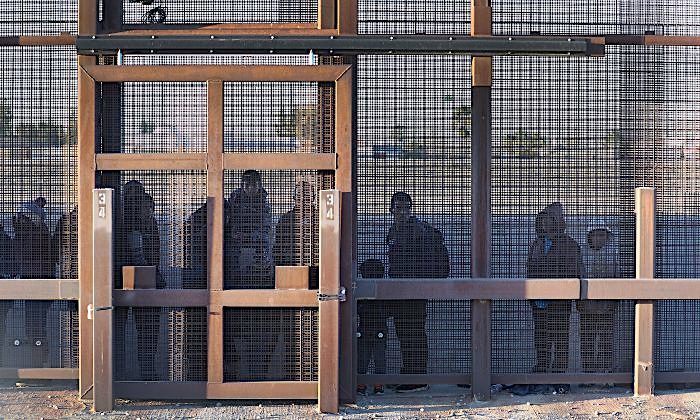
The El Paso Sector, covering some 270 border miles in westernmost Texas and the whole stretch across New Mexico, used to be one of the least eventful. During the slow months of October 2011 to January 2012, it averaged about 20 apprehensions of illegal border crossers a day-a rather light workload for an agent force of 2,400 (pdf).
Fast forward to those same months seven years later, and the workload has increased more than 14-fold, while the workforce remains the same.
Most of the blame falls on human smugglers and drug cartels, who "work hand in hand" and have moved their operations toward El Paso from south Texas, where increased Border Patrol presence starting a few years ago made their operations difficult, according to Ramiro Cordero, Border Patrol Special Operations Supervisor in the El Paso Sector.
"They did start hitting us here in El Paso, I'm going to say about a year, year and a half ago, little by little," he said in a Feb. 14 phone call.
Since the 2019 fiscal year started in October, however, the influx has intensified. Four months in, the nearly 35,000 apprehensions have already surpassed the number of apprehensions for the whole of fiscal 2018.
While most of the trespassers try to cross in the El Paso metro area, large numbers have also started to show up further west, in the desert, Cordero said.
Since October, the agents caught 27 groups of more than 100 - a total of about 5,500 - in the area of Antelope Wells, a small port of entry in the desert some 31 miles east of the Arizona border. "They think that by saturating our agents there ... all of our attention is going to begin to focus on that," Cordero said.
Multiple times in the past month, he said, agents have caught or detected narcotics smugglers trying to sneak in just as the agents are busy dealing with the illegal trespassers further down the border.
"It's a strategy. It's kind of like taking two bites at the apple," he said. "From their point of view, they're making money out of this - illegal aliens - because of course they do, and at the same time they think that they can get other stuff through."
Illegal immigrants have routinely acknowledged they pay thousands of dollars to human smugglers, so called "coyotes," whose smuggling routes are, in turn, controlled by the cartels.
Different Crisis
Along the whole southwest border, apprehensions reached more than 200,000 so far in fiscal 2019, up some 84 percent from the same period the year before.
While it's true that two decades ago the Border Patrol was catching more than double the trespassers it does today, Cordero cautioned against simple comparisons.
Back then, most of the trespassers were adult Mexican men, whom Border Patrol is skilled at promptly turning around. "We can process them, send right back within a couple of hours," he said.
Most now are coming from Guatemala, El Salvador, and Honduras. Through propaganda being spread in those countries, the migrants believe that if they cross the U.S. border with a child, the United States will let them in, Cordero said. And they're not wrong. U.S. immigration laws don't allow deportation of non-Mexican minors to Mexico. They also can't be held in detention for more than 20 days.
Most of the current migrants "go through a completely different process" than was common before, Cordero said. "It's tying our hands."
Barriers
While the El Paso metro area at least has border fences, the desert areas only have vehicle barriers, which are about five feet high and are easy to climb over.
President Donald Trump said on Feb. 14 he's examining a Homeland Security funding bill that would allow him to build another 55 miles of border fencing. Those would be, however, in the Rio Grande Valley Sector, which has faced an even larger influx of illegal crossings than El Paso.
The White House said on Feb. 14 that Trump will declare a national emergency to secure funds for the physical barrier along the U.S.-Mexico border and use the emergency powers to redirect other funding towards the wall construction.
"President Trump will sign the government funding bill, and as he has stated before, he will also take other executive action - including a national emergency - to ensure we stop the national security and humanitarian crisis at the border," White House press secretary Sarah Sanders said in a statement.
"The President is once again delivering on his promise to build the wall, protect the border, and secure our great country."
Such a move would be likely challenged in courts by his opponents.



Comment: President Trump enacted his power to declare a national emergency regarding the US southern border with Mexico. See also: